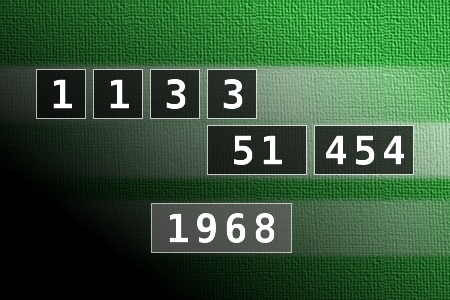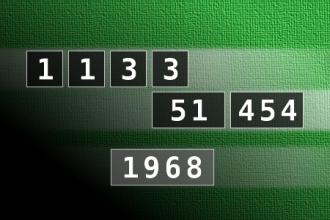Calculate the number 1968
NUMBERMANIA: Calculate the number 1968 using numbers [1, 1, 3, 3, 51, 454] and basic arithmetic operations (+, -, *, /). Each of the numbers can be used only once.Correct answers: 2
#brainteasers #math #numbermania


